Master CCAT in 2025 – Criteria Cognitive Aptitude Test
- Overview
- Sample Questions
- Curriculum
- Reviews
The Criteria Cognitive Aptitude Test, developed by Criteria Corp., stands as a benchmark for assessing critical thinking, problem-solving skills, and advanced learning abilities. It’s not just another test; it’s a gateway to unlocking opportunities in middle to upper-level job positions, including sales executive, managerial roles, software developers, executive assistants, and software analysts.
The CCAT is renowned for its rigorous nature, with only a mere 1% of test-takers navigating every question. However, at PrepTerminal, we see this as an opportunity for growth. Our CCAT Prep Course is meticulously designed to transform the challenge of the CCAT into a stepping stone for your career advancement.

CCAT Mastery Primer
Last Updated: Apr 14, 2025
Course Content
-
 Introduction 1 StepBuy this Course: Get full access to all lessons, practice tests and guides.
Introduction 1 StepBuy this Course: Get full access to all lessons, practice tests and guides. -
 Vocabulary 5 StepsBuy this Course: Get full access to all lessons, practice tests and guides.
Vocabulary 5 StepsBuy this Course: Get full access to all lessons, practice tests and guides. -
 Synonyms & Antonyms 5 StepsBuy this Course: Get full access to all lessons, practice tests and guides.
Synonyms & Antonyms 5 StepsBuy this Course: Get full access to all lessons, practice tests and guides. -
 Word Analogies 4 StepsBuy this Course: Get full access to all lessons, practice tests and guides.
Word Analogies 4 StepsBuy this Course: Get full access to all lessons, practice tests and guides. -
 Error Checking 4 StepsBuy this Course: Get full access to all lessons, practice tests and guides.
Error Checking 4 StepsBuy this Course: Get full access to all lessons, practice tests and guides. -
 Basic Math 4 StepsBuy this Course: Get full access to all lessons, practice tests and guides.
Basic Math 4 StepsBuy this Course: Get full access to all lessons, practice tests and guides. -
 Word Problems 4 StepsBuy this Course: Get full access to all lessons, practice tests and guides.
Word Problems 4 StepsBuy this Course: Get full access to all lessons, practice tests and guides. -
 Number Series 4 StepsBuy this Course: Get full access to all lessons, practice tests and guides.
Number Series 4 StepsBuy this Course: Get full access to all lessons, practice tests and guides. -
 Data Interpretation 4 StepsBuy this Course: Get full access to all lessons, practice tests and guides.
Data Interpretation 4 StepsBuy this Course: Get full access to all lessons, practice tests and guides. -
 Next in Series 4 StepsBuy this Course: Get full access to all lessons, practice tests and guides.
Next in Series 4 StepsBuy this Course: Get full access to all lessons, practice tests and guides. -
 Odd One Out 4 StepsBuy this Course: Get full access to all lessons, practice tests and guides.
Odd One Out 4 StepsBuy this Course: Get full access to all lessons, practice tests and guides. -
 Matrices 4 StepsBuy this Course: Get full access to all lessons, practice tests and guides.
Matrices 4 StepsBuy this Course: Get full access to all lessons, practice tests and guides. -
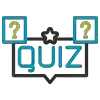 Full Size Practice Quiz 2 StepsBuy this Course: Get full access to all lessons, practice tests and guides.
Full Size Practice Quiz 2 StepsBuy this Course: Get full access to all lessons, practice tests and guides.
Success Stories
4.8 1837 Reviews
rob, 16 Jan
Solid review course that covers the…
Solid review course that covers the relevant topics in good detail
chad, 11 Jan
Great Program, amazing practice simulations
Easy to understand. Passed tests on first time thru.
QUEEN RIGHTEOUS, 07 Jan
Highly recommended.Great instructional…
Highly recommended.Great instructional information. I passed on the first try.
Kurt Doobie, 14 Nov
I recently took Prepterminal’s CCAT…
I recently took Prepterminal’s CCAT Test preparation course, and I’m thrilled to share that I passed the test! The course was comprehensive and well-structured, breaking down complex concepts into manageable sections, making learning efficient and effective. The practice questions and detailed explanations mirrored the exam format, helping me build confidence and speed. Prepterminal’s tips and strategies were invaluable for tackling tricky problems under time pressure. I highly recommend this course to anyone looking to pass the CCAT confidently. It was an essential part of my success!
MasterCommand, 14 Nov
Prepterminal. Prepare, practice, execute.
To say that Prepterminal helped me prepare and be ready for the testing phase would be an understatement. At first, looking at the course, I felt overwhelmed with the course material, but the course broke down each subject effectively which made it easier to understand. There were a few issues with some of the audio portion of the testing course, but beyond that, the course was well worth the money.
Abazix LLC, 09 Nov
Would recommend
Study material helped to pass my test on the first try.
Understanding CCAT
The Criteria Cognitive Aptitude Test (CCAT) is made up of 50 questions and has a 15-minute time limit.
The test covers 3 subjects:
Verbal Reasoning
- Vocabulary
- Synonyms & Antonyms
- Word Analogies
- Error Checking
Math & Logic
- Basic Math
- Word Problems
- Number Series
- Data Interpretation
Spatial (Abstract) Reasoning
- Next in Series
- Odd One Out
- Matrices
The questions in the verbal section of the CCAT test measures how well you can discern a word’s meaning, understand the relationship between different words, and identify the role of context in word choice. The CCAT tests math and logic section assesses your ability to understand proportions, use your algebra skills and manage word problems.
In the spatial reasoning questions you are required to flip or rotate shapes and identify patterns and outliers. Your ability to solve spatial reasoning questions will give your employers an understanding of how well you’ll be able to problem-solve and learn and make use of new information in the workplace.
Let’s look each section in detail to understand the type of questions you will encounter in the exam.
Verbal Reasoning
This section will equip you with the knowledge necessary to excel in the verbal reasoning section of the CCAT. You will get the essential knowledge, smart strategies, and practice necessary to not just handle these types of questions during the test, but also to apply what you learn in your career.
Verbal reasoning contains 4 subsections:
Vocabulary
The Vocabulary section of CCAT evaluates your understanding of words and the role of context in deciding their meaning.
The old mansion, known for its __________ past, __________ in the moonlight, creating an aura of mystery.
-
A:
Joyous, ignored
-
B:
Mundane, ran
-
C:
Forgotten, whispered
-
D:
Storied, glimmered
-
E:
Recent, yelled
Synonyms & Antonyms
The CCAT presents you with a range of multiple-choice questions. While the basic premise of synonyms/antonyms questions remains the same – choose the option that most closely matches or contrasts with the highlighted word, how each question goes about asking this can vary.
The “gregarious” child made friends easily at the new school.
-
A:
Shy and reserved
-
B:
Fond of company
-
C:
Preferring to be alone
-
D:
Unfriendly
-
E:
Indifferent
Word Analogies
This portion of the test is designed to test your language fluency and analytical skills. These questions give you a series of words that are connected in a secret way. Your job is to use your language skills to figure out this connection and apply your observations to finish the series.
Paper : Pen : Ink ::
-
A:
Pencil : Wood : Eraser
-
B:
Canvas : Brush : Paint
-
C:
Computer : Keyboard : Monitor
-
D:
Teacher : Student : Book
-
E:
Soldier : Jeep : Bullets
Error Checking
Error-checking questions give you data that looks very similar at first, but if you look closer, you might find small differences. Your task is to take a magnifying glass to the provided information and spot these differences.
| James A. Wilson | AA22BB33 | James A. Wilson | AA22BB33 |
| Emma G. Hernandez | CC44DD55 | Emma G. Hernandez | CC44DD56 |
| Lucas B. Clark | EE66FF77 | Lucas B. Clark | EE66FF77 |
| Amelia J. Miller | GG88HH99 | Amilia J. Miller | GG88HH99 |
| Mason R. Davis | II00JJ11 | Mason R. Davis | II00JJ12 |
-
A:
1
-
B:
2
-
C:
3
-
D:
4
-
E:
5
Math & Logic
Math & Logic empowers you to navigate mathematical challenges, decode complex data, and unlock insights that drive decisions. It is not just about calculations; it is about seeing patterns, making connections, and turning numbers into actionable knowledge.
Math & logic contains 4 subsections:
Basic Math
These questions evaluate your capacity to critically analyze numerical information. You must make informed decisions based on the data provided, considering various perspectives and potential consequences.
-
A:
17.0 kg
-
B:
17.5 kg
-
C:
18.0 kg
-
D:
18.5 kg
-
E:
19.0 kg
Word Problems
Word problems challenge you to apply mathematical concepts to solve real-life problems. It is all about understanding the scenario, picking out the important details, and figuring out which math operations to use to crack the problem.
An employee is assigned to inspect 7 different files in a stack. Each inspection requires 30 minutes. After inspecting the first 3 files, and then again after the next 2, the employee takes a 20-minute break. How much time in total do they spend on this inspection?
-
A:
4 hours and 10 minutes
-
B:
4 hours and 25 minutes
-
C:
3 hours and 45 minutes
-
D:
3 hours and 20 minutes
-
E:
5 hours and 30 minutes
Number Series
This portion of the test is designed to test your ability to identify & understand patterns. These questions will feature sequences that follow a complex pattern & you need to solve it to find the missing number.
3, 6, 7, 14, 15, ...?
-
A:
28
-
B:
29
-
C:
30
-
D:
31
-
E:
32
Data Interpretation
Data Interpretation questions ask you to analyze and make conclusions from numerical data. This can be displayed in different forms, like tables, charts, and graphs. Your task is to extract important information, spot patterns, and trends, and make logical deductions based on the data presented.

What was the average monthly sales for six months?
-
A:
$110,000
-
B:
$135,000
-
C:
$155,000
-
D:
$175,000
-
E:
$180,000
Spatial (Abstract) Reasoning
These questions require you to choose the visual element that best fits the logic of the question. Instead of using facts, specific details, or previous knowledge to solve complex problems, it takes you into the realm of imagination and creative thinking.
Spatial/Abstract reasoning contains 3 subsections:
Next in Series
Next In Series questions evaluate your ability to recognize patterns, relationships, and sequences in a set of abstract figures. You are presented with a series of figures or shapes that follow a particular pattern, progressing sequentially from one image to the next. Your task is to discern the pattern and anticipate what the next item in the series should be.

-
A:
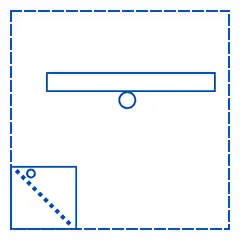
-
B:
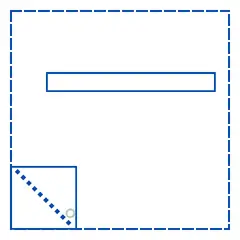
-
C:
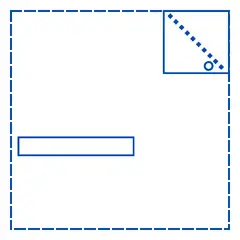
-
D:
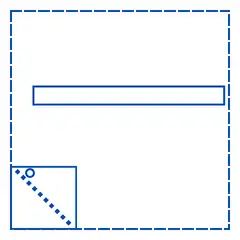
-
E:
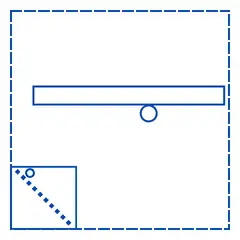
Odd One Out
In Odd One Out questions, you are presented with a series of images that follow a particular pattern. With the outlier either following a different sequence from the rest or remaining static while the others evolve. Keep in mind that some questions might have multiple patterns at play simultaneously.

-
A:
A
-
B:
B
-
C:
C
-
D:
D
-
E:
E
Matrices
Matrix questions are typically displayed as a 3X3 grid with multiple-choice options. In these grids, all but one piece is missing. Your main goal is to predict this absent piece in this grid. The twist? Patterns can be surprisingly complex, showing up in various forms. From basic turns to detailed color changes and alterations in shape.
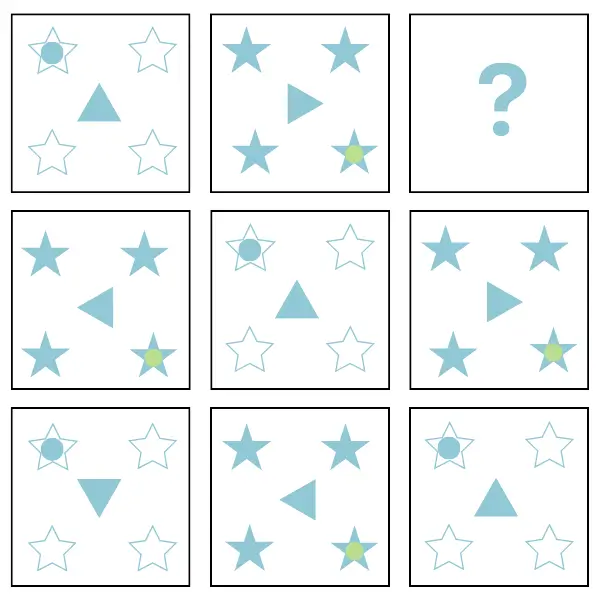
-
A:
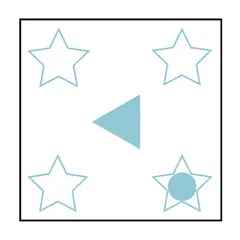
-
B:

-
C:

-
D:
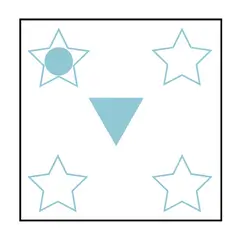
-
E:
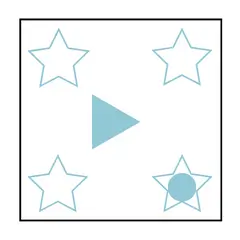
Why Choose Our Course?
Given the average score of 24 out of 50 and the high completion rate of the test, the challenge is evident. But Prepterminal’s CCAT Prep Course transforms this hurdle into a launchpad. It offers:

In-depth Lessons: Gain a thorough understanding of the CCAT, its components, and the strategic knowledge to conquer them.

Proven Test-Taking Strategies: Access effective techniques for navigating the test, avoiding pitfalls, and spotting and avoiding time-wasting traps. Ensuring candidates can approach even the toughest questions with confidence.

Interactive Quizzes: Put theory into practice with interactive quizzes that will take your preparation to the next level. These mimic real test conditions, reinforcing your knowledge and skills.

Rich Resource Library: Utilize a treasure trove of materials tailored for the CCAT, boosting your study efficiency. These materials are here to turbocharge your study time as the test day approaches.

Customized Learning: Each candidate is unique, and so is their learning style. Our course reflects that, as it can be accessed on a variety of devices at any time. You dictate the pace of your learning journey.

Time Management: Candidates are racing against time in the CCAT, so being efficient is the key to success in the test. Luckily, our detailed strategies and tips ensure that time is no barrier to good performance.
Frequently Asked Questions (FAQs): CCAT
The CCAT (Criteria Cognitive Aptitude Test) is challenging due to several factors. It consists of 50 questions that must be answered in 15 minutes, allowing only about 18 seconds per question, which creates intense time pressure. The questions cover various topics, including math, logic, verbal reasoning, and spatial reasoning, increasing in difficulty as the test progresses. The ban on calculators further complicates math questions under time constraints.
With only about 1% of test-takers completing all 50 questions, many struggle to keep pace. However, with adequate practice and preparation, many students have found the test manageable and successfully passed.
The definition of a good CCAT score varies depending on the job you’re applying for. Generally, scoring in the top 20% of candidates is considered strong, which typically means getting around 31 correct answers out of 50. The average CCAT score is 24, meaning you performed better than half of the test-takers. Achieving a score of 42 or higher places you in the top tier for any role that requires the CCAT.
Examples of good CCAT score ranges by job type:
- Accounting: 20 (low) to 50 (high)
- Analyst: 22 (low) to 50 (high)
- Engineering: 22 (low) to 50 (high)
- Project Manager: 21(low) to 50(high)
To be competitive, aim for a score that meets or exceeds the benchmark set by the employer for the role you’re targeting. Scoring above average is a positive indicator, but being in the top 20% greatly enhances your competitiveness.
Most candidates do not finish the CCAT due to its challenging format. Specifically, only about 1% of test-takers manage to complete all 50 questions within the 15-minute time limit. This indicates that it is common for individuals to leave some questions unanswered, and many focus on answering as many questions as possible rather than completing all of them. The test prioritizes accuracy over the number of questions answered, so it’s more beneficial to answer fewer questions correctly than to rush and answer all with lower accuracy.
The key differences between the CCAT (Criteria Cognitive Aptitude Test) and UCAT (Universal Cognitive Aptitude Test) lie in the number of questions, duration, and language accessibility. The CCAT features 50 questions to be answered in 15 minutes, focusing on a rapid assessment under tight time constraints. In comparison, the UCAT includes 40 questions with a 20-minute duration, offering more time per question and reducing pressure. Additionally, the CCAT is primarily administered in English, whereas the UCAT is designed to be language-independent and is available in more than 20 languages, making it more accessible for non-English speakers.
The CCAT is scored based on the number of correct answers. There is no penalty for incorrect answers, so it’s advisable to answer as many questions as possible. Scores are often presented as a raw score (total number of correct answers) and a percentile rank, indicating how a candidate performed relative to others.
No, the CCAT does not test specific job skills or knowledge. Instead, it focuses on general cognitive abilities that are broadly applicable to various job roles. It is designed to measure aptitude and potential rather than specific skills.
Employers use CCAT results as one factor in a comprehensive evaluation process. While a high score might significantly enhance a candidate’s chances for cognitive-demanding roles, employers often weigh the test results alongside other factors such as interviews, experience, skills assessments, and cultural fit. In some cases, a lower score might be offset by exceptional performance in other areas.
To effectively gauge which sections of the CCAT—verbal, numerical, or abstract reasoning—are your strengths or weaknesses, it’s important to take practice tests that closely mimic the format of the actual exam. These tests can provide valuable insights into your performance across different question types.
For a more targeted preparation, consider taking our free practice test, which not only simulates the CCAT experience but also offers detailed feedback on your performance in each section. This will help you focus on areas that need improvement and build confidence before the real test.

Created by: Michael Lerner
BSc, Psychometric Tutor, Prepterminal Test Expert
8876 students, 4.8, 1837 Reviews
Hey, I’m Michael, PrepTerminal’s CCAT expert. I am here to help you with any questions or concerns you may have about the CCAT. Feel free to contact me at [email protected].
